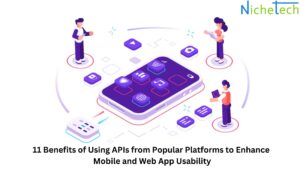Bringing a new app idea to life is both exciting and challenging. To increase your chances of success, it’s essential to focus on building a Minimum Viable Product (MVP) first. An MVP allows you to validate your idea, gather user feedback, and iterate quickly while minimizing costs. Here’s a step-by-step guide to help you develop the MVP for your business app effectively.
1. Define the Problem and Target Audience
Before diving into development, take a step back to identify the problem your app aims to solve and who will benefit from it. Ask yourself:
What specific problem does my app solve?
Who is my target audience?
How is this problem currently being addressed, and how can my app do it better?
Clearly defining your problem and audience will serve as the foundation for your MVP development process.
2. Conduct Market Research
Validate your app idea by conducting thorough market research. Look for answers to the following:
Are there similar apps in the market?
What are their strengths and weaknesses?
What unique value can your app provide?
Use surveys, interviews, and competitor analysis to understand potential user needs and market demand.
3. Prioritize Core Features
An MVP is not about building a fully-featured app; it’s about focusing on the core functionalities that solve the primary problem. Create a list of features and prioritize them based on their value to the user and feasibility. Consider using tools like the MoSCoW Method to categorize features into:
Must-haves (essential for the MVP)
Should-haves (important but not critical)
Could-haves (nice to include later)
Won’t-haves (features for future versions)
4. Create User Stories and Wireframes
Translate your prioritized features into user stories to map the user journey within your app. For example:
“As a user, I want to [feature], so I can [benefit].”
Next, create wireframes or mockups to visualize the app’s layout and functionality. Tools like Figma, Sketch, or Adobe XD can help you design intuitive user interfaces.
5. Choose the Right Tech Stack
Select a technology stack that aligns with your app’s goals, budget, and timeline. Consider factors such as:
Platform: Will your app be web-based, mobile (iOS/Android), or both?
Backend: What database, server, and APIs will you use?
Frontend: What frameworks or libraries are best for your user interface?
Consult with a development team or technical expert to make informed decisions.
6. Develop and Test the MVP
With the groundwork laid, start developing your MVP. Follow these steps:
Build Incrementally: Focus on developing one feature at a time, starting with the highest-priority features.
Ensure Quality: Conduct regular testing throughout the development process to identify and fix bugs early.
Use Agile Methodology: Work in sprints to iterate quickly and adapt to changes as needed.
7. Launch Your MVP
Once your MVP is ready and thoroughly tested, it’s time to launch. Use platforms that align with your target audience, such as:
App stores (Google Play, Apple App Store)
Web platforms
Social media or email campaigns for promotion
Monitor the launch closely to address any issues and ensure smooth user adoption.
8. Gather Feedback and Analyze Data
Post-launch, gather user feedback and track key performance metrics. Use tools like Google Analytics, Mixpanel, or Hotjar to measure:
User engagement
Retention rates
Feedback on specific features
Encourage users to share their thoughts through surveys, app reviews, or direct communication.
9. Iterate and Improve
Use the insights from user feedback and analytics to refine your app. Identify:
Features that need improvement
New features to consider for future updates
Any technical issues or pain points
Prioritize updates based on user demand and business goals, and continue iterating until you achieve product-market fit.
10. Plan for Scalability
As your MVP evolves and gains traction, prepare for growth. Plan for:
Infrastructure Scalability: Upgrade servers and databases to handle increased traffic.
Feature Expansion: Gradually introduce new features while maintaining app stability.
User Support: Enhance customer support to address the needs of a growing user base.
Developing an MVP is an iterative process that lays the groundwork for your business app’s success. By focusing on solving a core problem, engaging your audience, and continuously improving, you can build an app that meets user needs and drives long-term growth.







